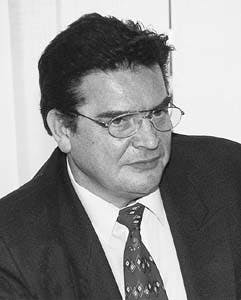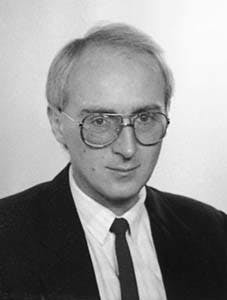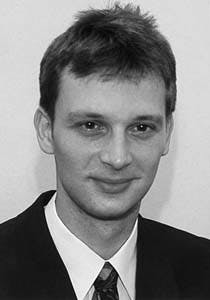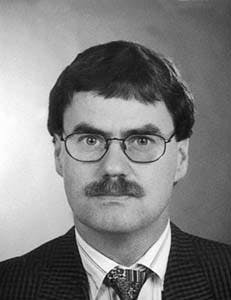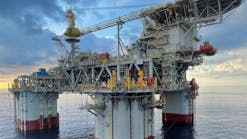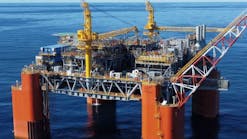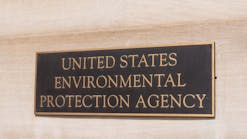Ján Rajzinger
Slovensky plynárensky priemysel, s.p.
Slovtransgaz, Bratislava, SlovakiaAndreas Dercz, Frank-Ulrich Müller, Rolf Zeppenfeld
ILF Consulting Engineers
Munich
Study of a major Slovakian gas-pipeline system to determine future upgrade and expansion needs resulted in a strategy that, among other benefits, fully utilizes old units on standby, offers acceptable investment costs, and represents the best fuel-electric energy saving potential with low air-pollution.
ILF Consulting Engineers, Munich, conducted the optimization study for upgrading and expanding of one of Europe's major gas transmission systems, Slovak Gas Industry's Slovtransgaz.
Considerations
The steady growth of natural-gas consumption in Europe (2%/year on the 10-year trend growth), as well as the need to replace ageing equipment, urges gas companies operating large European transportation networks to upgrade, retrofit, and expand their systems.
The main goals of such programs are to cover growing gas demand, reduce transportation costs, improve system reliability, and comply with more stringent environmental protection regulations.
The programs must consider all restrictions imposed by existing installations such as the maximum allowable operating pressure (MAOP) of existing pipelines and characteristics of existing compressor stations (pressure ratio of machines and their configuration).
These conditions require a "tailor-made" study for each particular case. ILF provided such a study.
The Slovtransgaz system consists of a main segment (several hundred kilometers long) with current throughput in the range of 80 billion cu m/year (bcmy) and some smaller branch segments for local supply and interconnection (Fig. 1) [51202 bytes].
The main segment consists of several parallel pipelines with diameters ranging from 30 to 56 in. and a number of compressor stations spaced at about 100-km intervals.
Because of steadily increasing throughput in the years since the system was commissioned, total power installed in the stations has reached up to 1 gw (ISO) delivered by more than 100 turbocompressor drives of different types and power ratings.
The pipelines of the main segment have a MAOP of about 75 bar, with the exception of some sections downstream of the last compressor station which are designed for a lower pressure. The compression power demand is covered by different types of gas turbine or electric motor-driven compressor trains ranging from 6 to 27 mw nominal power.
The 6-mw turbocompressor trains are powered by heavy-duty gas turbines, installed within the system's first decade of operation, and are the base-machine type. Many of these machines have already exceeded their standard service life.
Mechanical wear has created a steady loss of power and efficiency as well as deterioration of machine availability which currently results in serious limitation to system operability. These units need to be gradually replaced.
The other, larger units, representing power ratings of 22-27 mw, were installed later. (Fig. 2) [50699 bytes]. shows the typical configuration of one pipeline section.
Study; model
The objective of an upgrading study is to define the optimal strategy for both expansion and reconstruction of the system, based on a given throughput scenario for the future.
The study work is best carried out in three steps (Fig. 3) [45369 bytes].
In the first, a precise simulation model of the existing transportation system has to be prepared and validated with measured data to produce a reliable basis for the next steps.
The evaluation of upgrading alternatives can be subdivided into the preparation and examination of different extension scenarios regarding the overall system (Step 2) and a machine-selection study for the finally chosen extension scenario (Step 3).
For optimization of a complex gas-transportation system upgrade, a properly established simulation model is of utmost importance.
A powerful steady-state simulation tool is required to simulate pipe sections and compression machinery, taking into account the varying thermodynamic properties of the gas, pressure, and heat losses in the piping, as well as machine configuration and performance characteristics of the different compressor and gas-turbine types.
The modeling procedure requires thorough data acquisition.
It includes both operational data and such boundary conditions as gas composition, current and forecast throughputs, contractually guaranteed parameters at the custody points, yearly load distribution diagrams, as well as such construction parameters as pipeline design data (OD, W.T., MAOP, length, inner lining, outer coating, elevation profile), compressor performance charts, characteristics of station auxiliary equipment (filters, coolers, metering runs), and station piping configuration.
Some data that cannot be obtained directly, such as temperature and humidity of soil at pipeline depth, must be derived from meteorological information or assumed on the basis of general engineering experience.
After inputting of the system parameters, the model must be verified and tuned with operational data. The main tuning parameter of the pressure-drop model is the integral pipe roughness per inner lining type.
Extension scenarios
In general, the throughput increase of a gas-transportation system can be handled by expanding the compressor stations with respect to compression ratio, flow, and driving power, or laying additional pipelines (loops) to reduce pressure loss, or adding additional compressor stations between existing ones.
Formulating the extension scenarios for a study requires as a further variable: the service-life limit of existing units.
These measures are strongely interrelated, and it becomes a classical mixed integer-real optimization task to find the best combination considering investment and operating cost.
Careful evaluation and selection of feasible combinations will reduce the number of alternatives to be evaluated. This is essential to finding the optimal solution economically.
Typical considerations involve pressure-ratio, looping, service life limits, and size of additional units.
Pressure ratio
Utilizing the maximum discharge pressure of a station is crucial for increasing the capacity of the system economically.
The critical point is the first compressor station located close to the upstream battery limit because the pressure level of this station cannot be influenced without contractual implications.
Therefore, during preparation of extension scenarios, the possibility of raising the pressure ratio in the first compressor station through measures taken within the station must be considered a prospective alternative.
Increasing the pressure ratio in the first compressor station is a long-term tendency (Fig. 4) [36927 bytes]. The operating ranges of compressors installed in subsequent extension steps are shifted upwards to higher heads.
Consequently, older units designed for lower pressure ratio and unable to run the anticipated new ratio with respect to maximum speed must be switched over to a multi-stage compression mode.
The increased discharge pressure of a compressor station can result in higher inlet pressures in subsequent stations, especially in the directly following one.
The following alternatives for adapting a station to higher inlet pressures can be evaluated:
- Station by-pass in case of lower flows
- Modification of inner bundles of the existing compressor trains (With inner bundles designed for lower pressure ratios, compressors can be run within the optimal efficiency range which results in lower fuel consumption and, as a consequence, lower operational costs.)
- Adaption of the looping program (cancellation of loops), if additional loops are already scheduled for the first pipeline section.
The optimal solution depends on the specific energy cost. If energy is very cheap, the third alternative will be the best because the high investment costs of the loop cannot be balanced by the eventually reduced operational costs in the subsequent stations.
Looping
In general, a superstructure of potential loops may be incorporated in the simulation model and optimized with respect to diameter, position, and length.
Typically, in a situation of increasing gas demand over decades, a continuous looping program is already established and must be considered.
Additional constraints on position and diameter of loops resulting from existing right-of-way or already ordered pipes may be imposed.
A preferred local target for the looping program exists, if the MAOP changes to lower values in the downstream part of the system. The looping program may be optimized to utilize these sections without pressure reduction to avoid energy losses.
Service-life limit
The original guaranteed service-life limit of the oldest turbocompressor units in the system, in the range of 100,000 operating hr, is already exceeded for some machines.
Single units may even approach 120,000 hr. A redefinition of the service-life limit based on maintenance experience has to be considered to ensure economic utilization of the existing equipment.
Scenarios for two or three different service-life limits, taking into account the impact on maintenance cost, reliability and stand-by requirements, should be defined and investigated.
Additional units' size
To further restrict the number of alternatives, it is recommended to assume a probable size for the turbocompressor units to be added in the future in this phase of the study.
A preferred size is the one corresponding to the latest installed units, which is the 22-27 mw class in this case. The final machine selection study has to confirm this assumption. Otherwise, Step 2 of the study approach must be repeated.
In the particular case evaluated here, considering all system-specific properties, the extension scenarios taken as a basis for comparison were first divided into two groups, the distinction being the pressure ratio in the first compressor station.
In a further step, the scenario groups were subdivided into single scenarios under consideration of the length and number of looping sections to be erected and the already initiated looping program.
In the third step, separate options considering service life limit of base units were defined. In total, six different extension alternatives were investigated.
The scenarios using an increased pressure ratio in the first compressor station showed a clear advantage over the ones complying with pressure ratios available at present.
With respect to the service life level of the 6-mw compressor units, the study work resulted in the recommendation not to exceed the service life limit of 100,000 fired hr because the efficiency deterioration and poor availability resulted in higher maintenance and operating costs and reduced reliability of the system.
With given operating pressures per station, the compressor/driver selection includes the definition of evaluation criteria and survey of the market, the definition of alternatives covering given power and capacity demands as well as providing adequate stand-by, and finally evaluation of the financial impact of alternatives.
Criteria for machine selection
To reduce the number of machine alternatives subject to a detailed evaluation, a short-list of machine types was developed based on the following criteria:
- Lower power limit: power rating not less than 11 mw to operate with the typical small pipeliner frame of 20 in.
- Upper power limit: availability of mechanical-drive turbines (biggest machines available as mechanical drives)
- Availability of dry low-emission combustion system (DLE) in order to comply with more stringent regulations concerning CO and NOx emissions
- Thermal efficiency of gas turbine in simple cycle operation at least 32-33% (heat rate o11,000 k-Joules/kw-hr) in order to minimize fuel consumption and CO2 emissions per unit of transported gas
- Turbocompressor of high-pressure pipeline booster design, incorporating vertically split case according to API 617, high-efficiency impeller design (polytropic efficiency 80-85%), dry-gas seals, low-resistance nozzle design, and direct coupling to the gas turbine.
The market survey resulted in a short list of 13 gas-turbine types, grouped by seven power classes (Table 1) [146665 bytes].
Apart from the smallest 11-mw class, all machines specified above belong to the family of aeroderivative engines, which are characterized by a very compact design, high firing temperatures and very low heat rates, or, in other words, very high simple-cycle thermal efficiencies (37-42%).
All units possess already, or will be equipped in the near future, dry low-NOx combusting systems. The problem of NOx content in the exhaust gases has become a major point of concern during selection of a driver type because of the stringent air-pollution restrictions imposed by government regulations in many countries during the last decade.
In general there are two approaches to control NOx emission. The first, applied for example by General Electric (GE) for LM 6000 (and tested currently for LM 2500) is called "parallel staging" and comprises a large number of burners operating with premixed fuel.
In part load conditions, a certain number of burners are switched off so that the others can be operated above the flameout limit.
The emission-reduction system applied by Rolls-Royce is known as a series fuel staging. A portion of fuel is premixed with air and injected into the primary combustion zone.
Additional fuel, also premixed with air, is injected downstream of the first zone, into the so-called secondary zone. Secondary-zone-fuel flow control provides flexible operation in partial-load conditions with a wide stability range.
The general trend in gas-compression equipment is towards the increased size of machinery. This can be seen as a positive reflection on the reliability and durability of the equipment, particularly the gas turbines.
Mechanical drive applications are usually characterized by extremely long run periods and low tolerance for unplanned outages. Previously, therefore, it was almost standard practice to apply more smaller units (instead of fewer larger units) in order to guarantee availability of the system, although all calculations showed clear economic advantages for the larger units.
Over recent years, however, both manufacturing and operating procedures have improved and the development of machine control has resulted in replacement of the old relay-logic by the advanced redundant-microprocessor equipment. Such factors have brought vast improvements in equipment reliability.
As a consequence, for study purposes, the full range of applicable machine types has to be taken into consideration during preparation and comparison of different configuration models.
Machine configuration alternatives
For the purpose of this study the machine configuration models may be defined as per Table 2 [42724 bytes].
Most of the old units will still be operable within the investigated period of time but the extremely low thermal efficiency of the turbines, excessive fuel consumption, and considerable environmental pollution, as well as low reliability, do not recommend them for the base-load duty.
The optimal application for these units is therefore the stand-by and peak shaving duty that would allow investment-cost savings (fewer new turbocompressors required) as well as keeping average fuel consumption and air pollution within reasonable limits.
In addition, the number of possible operating configurations in a compressor station is limited to a manageable amount if the machines with highest efficiency (drives and compressors) are used for base load operation.
The power requirements of a reliable stand-by configuration can be defined as follows:
- The stand-by compression facilities should guarantee replacement of the biggest unit and one other gas turbine larger than the old 6-mw machines-for the nominal case (approximately 90% of maximum load throughout): for example, in case of adding 11-mw gas turbines (Model I) replacement of an existing 27-mw unit (the biggest unit) and one new 11-mw unit.
- In maximum flow case in summer conditions only, the shutdown of the biggest unit must be covered by stand-by machines (e.g., the existing 27-mw unit in Model I).
Technical feasibility
Model I (11 mw) and Model IV (27 mw) are certainly feasible, since sufficient operation experience is available including the DLE combustion system (Cooper-Rolls).
Model II (14 mw) cannot be recommended without technical reservations since the DLE combustors are still unavailable due to the time schedule applied by General Electric for its aeroderivative gas turbines.
Although a DLE combustion system is available for Model III (22 mw), no operation experience can be presented yet for this subsystem.
Models V and VI are likely configurations of the future because they follow the overall trend to increased machinery size. Up to now, however, these sizes have not been applied as mechanical drive and cannot be recommended because of lack of operation experience in the required service.
In addition, single-case configuration must be excluded for these models because of construction problems with existing compressor frames to absorb such a large driver power.
Economic comparison
Investment costs are mainly influenced by the minimum number of units to be installed. However, a negative impact arises from unused capacity.
For small classes (Models I and II), the required number of new units is high, resulting in high investment cost per mw and installed unit. With larger models (Models V and VI), overcapacity is unavoidable and must be paid for.
As a result, middle class units (Models III and IV) keep the required unit number small and fit well with the capacity requirement schedule, thus showing a minimum investment cost.
With increased energy prices (especially for electric energy) as well as lower fuel-gas consumption due to higher efficiency gas turbines, replacing the electrocompressors would move the economic optimum towards the larger machine classes.
Environment; maintenance
Regarding emissions of NOx and CO, Models I, IV, V, and VI qualify.
With respect to environmental impact of gas-turbine efficiency, a clear advantage exists for the largest unit Models V and VI that can operate with a simple cycle efficiency of more than 40%.
Of course, minimizing the number of different machine types will be an advantage for maintenance and operation of the configuration, with respect to spare-part storage and technician skill.
Models III and IV, each of which adds machines of existing types, overrule the other configurations in this aspect.
Recommended configuration
Weighting and summarizing these findings results in the recommendation of Model IV to cover future compression requirements in the given context.
This model has the following advantages:
- Complete technical feasiblity, including the field- proven DLE combustion system (Cooper-Rolls)
- Very good coverage of system requirements, fully using the old units as stand-by and peak shaving equipment without the necessity of running them in nominal load case duty
- Complete stand-by coverage (two units can be replaced by stand-by machines)
- The second best model with respect to initial investment costs
- No increase of the machine variety, thus avoiding additional maintenance organization effort
- The best fuel/electric energy saving potential as well as lowest air-pollution factor among the classical compressor configuration models.
Procedure updates
The proposed evaluation procedure for a typical upgrading project for high-capacity gas transmission systems has proven suitable with respect to transparency, complexity, accuracy, and the required effort.
The forecast figures, such as expected flows, gas and energy prices, which are essential for selection and evaluation of alternatives, are of course political and strategic.
In principle, they are subject to inaccuracies and potential changes. Also, the gas-turbine market and related operating experience are developing rapidly.
Therefore, an upgrading study covering a long timeframe should be frequently updated in order to validate the reconstruction steps with respect to actual boundary conditions.
The Authors
Ján Rajzinger is general manager at Slovtransgaz, division of Slovak Gas Industry (SPP), Bratislava, which he joined in 1993. In 1990, he joined the Ministry of Economy as a government counsellor. Rajzinger holds an MS in mechanical engineering from the Technical University, Kosice, Slovakia.
Andreas Dercz is project manager at ILF Consulting Engineers, Munich, responsible for major gas-pipeline extension projects. He holds an MS in mechanical engineering from Silesian Technical University, Gliwice, Poland.
Frank-Ulrich Müller is process engineer at ILF Consulting Engineers. He works in simulation of pipeline networks and compressor stations. MMüller holds MS degrees in chemical engineering from Stuttgart University and in process integration from University of Manchester, U.K.
Rolf Zeppenfeld is department manager at ILF Consulting Engineers, responsible for ILF's gas industry activities. He has worked in the oil, gas, and petrochemical industry since 1981. Zeppenfeld holds MS and PhD degrees in chemical engineering from Munich Technical University.
